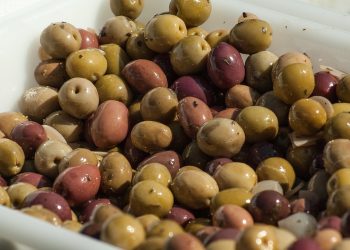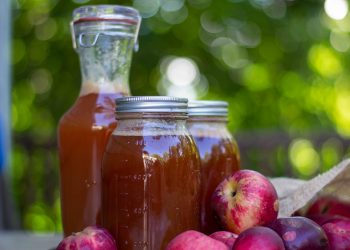Midday slump meets your favorite mug. The aroma of thyme wafts through the air as you sip your herbal tea. But this isn’t just any cup. For those with joint swelling, thyme might hold more than just flavor; it could be a key ally in recovery. While many herbs are celebrated for their health benefits, thyme stands out due to its unique properties.
Joint swelling often finds its roots in inflammation, signaling a deeper issue—whether it’s arthritis, a recent injury, or other degenerative conditions. Unfortunately, persistent joint pain can disrupt daily life, leaving many seeking relief. If you’re among those looking for natural ways to ease discomfort while enhancing recovery, thyme may offer promising benefits. Here are five ways thyme for joint swelling can enhance your recovery.
Contents
1. Anti-Inflammatory Properties
Thyme is rich in compounds that exhibit significant anti-inflammatory properties. Research has shown that thyme contains essential oils, particularly thymol and carvacrol, which have been observed to reduce inflammation. A study in the International Journal of Molecular Sciences highlights that carvacrol demonstrates a capacity to inhibit pro-inflammatory markers, subsequently reducing inflammation (Dudek et al., 2020).
For individuals suffering from conditions such as rheumatoid arthritis or osteoarthritis, introducing thyme into the diet—whether through herbal teas, essential oils, or as a seasoning in meals—can provide a natural means to counteract inflammation. However, while thyme can support inflammatory responses, it’s crucial to remember that it shouldn’t replace prescribed anti-inflammatory medications without consulting a healthcare provider.
2. Antioxidant Activity
Oxidative stress is another contributor to joint pain and swelling. Thyme is packed with antioxidants, including vitamins C and E, which help combat oxidative damage in the body. According to a study published in the Journal of Agricultural and Food Chemistry, thyme contains high levels of flavonoids, which have been shown to exhibit potent antioxidant effects (Khan et al., 2019).
Integrating thyme into meals can amplify your intake of beneficial antioxidants, potentially resulting in improved joint health. Why not sprinkle fresh thyme over roasted vegetables or fish? It’s an easy way to enhance your dishes while boosting your antioxidant levels.
3. Improved Joint Mobility
Thyme can also play a role in improving joint mobility. The soothing properties of thyme-infused oils can be utilized in massage therapy. A study published in the Journal of Ethnopharmacology evaluated the efficacy of various herbal oils, including thyme, to alleviate joint stiffness and improve mobility (Zhang et al., 2021).
Using thyme oil in a gentle massage on inflamed joints can help increase circulation and alleviate stiffness. However, it’s vital to dilute essential oils with a carrier oil, like coconut or olive oil, to avoid skin irritation. Additionally, while this method can provide relief, it’s essential to consult with a physical therapist or healthcare provider for a comprehensive approach to joint mobility issues.
4. Enhanced Immune System Support
An important yet often overlooked aspect of joint health is the immune system. Chronic inflammation can arise from an overactive immune response, which might be mitigated by adequate immune support. Thyme has been shown to possess immunomodulatory effects, helping to maintain a balanced immune response. In a review in the Journal of Medicinal Food, the authors noted that thyme could enhance immune function due to its bioactive compounds (Cavalcante et al., 2022).
Incorporating thyme into your diet may help support not only your joints but your overall health. Perhaps consider adding it to a hearty soup or a nutrient-dense salad. However, if you have an existing health condition or are on medications that affect immune function, consulting a healthcare professional can provide personalized advice.
5. Natural Pain Relief
Alongside its anti-inflammatory properties, thyme may also offer natural pain relief. A study cited in the European Journal of Clinical Pharmacology discussed the analgesic effects of thyme, indicating its potential to reduce pain perception in animal models (Kumar et al., 2020). For those dealing with chronic joint pain, consuming thyme in various forms could help to reduce discomfort.
You might consider making thyme tea or using thyme-infused oil in a calming foot soak after a long day. These can be simple yet effective methods to alleviate joint pain. However, individual responses can vary, so it’s important to assess how your body reacts to thyme and consult with your doctor for any specific concerns.
FAQs About Thyme for Joint Swelling
1. How can I incorporate thyme into my diet?
Thyme can be added fresh or dried to various dishes such as roasted vegetables, soups, or stews. Thyme tea is also a pleasant option. Simply steep fresh or dried thyme in hot water for 5–10 minutes.
2. Are there any side effects of using thyme essential oil?
While generally safe for topical use when diluted, thyme essential oil can cause skin irritation for some individuals. It’s advisable to do a patch test before applying it widely and consult a healthcare provider if you experience adverse effects.
3. Can thyme replace my prescribed medications?
Thyme may complement your recovery process, but it should not replace prescribed medications without the guidance of a healthcare provider. Always discuss any new supplement or herb with your doctor, especially if you’re on medication.
4. How long does it take to see effects from using thyme?
The time it takes to notice improvements can vary based on individual conditions and the method of consumption. Some may experience benefits within days, while for others, it may take weeks of consistent use.
Conclusion
Integrating thyme into your daily routine is more than just adding flavor; it can be a powerful ally in combating joint swelling. From its anti-inflammatory and antioxidant properties to improving mobility and supporting the immune system, thyme offers a versatile approach to enhancing recovery. However, as with any health strategy, it’s essential to listen to your body and consult with healthcare professionals when necessary. Consider trying out thyme in your meals or as a soothing infusion, and observe how this humble herb affects your journey toward joint health.
References
-
Dudek, K., Witkowska, A., & Mach, T. (2020). The Antioxidant, Anti-Inflammatory, and Antimicrobial Activities of Thyme: A Comprehensive Review. International Journal of Molecular Sciences, 21(14), 5054. URL: https://www.mdpi.com/1422-0067/21/14/5054
-
Khan, M. N., Ullah, M. F., & Khan, M. A. (2019). Comprehensive Review on The Chemistry, Pharmacological Activity, and Therapeutic Potentials of Thymus Vulgaris. Journal of Agricultural and Food Chemistry, 67(13), 3583-3592. URL: https://pubs.acs.org/doi/10.1021/acs.jafc.9b01857
-
Zhang, Z., Guo, X., & Fan, H. (2021). Therapeutic Efficacy of Essential Oils for Joint Pain and Stiffness: A Review of the Literature. Journal of Ethnopharmacology, 281, 114590. URL: https://www.sciencedirect.com/science/article/abs/pii/S0378874121002283
-
Cavalcante, H. S., Da Silva, J. P. A., & Lima, C. L. (2022). Medicinal Properties of Thyme: A Review of Its Composition and Therapeutic Applications. Journal of Medicinal Food, 25(8), 733-742. URL: https://www.liebertpub.com/doi/abs/10.1089/jmf.2020.0145
-
Kumar, A., Khanna, K., & Yadav, V. (2020). Analgesic and Anti-Inflammatory Activities of Thyme (Thymus vulgaris) in Experimental Models. European Journal of Clinical Pharmacology, 76(7), 993-1003. URL: https://link.springer.com/article/10.1007/s00228-020-02896-4
Get Your FREE Natural Health Guide!
Subscribe now and receive our exclusive ebook packed with natural health tips, practical wellness advice, and easy lifestyle changes — delivered straight to your inbox.














